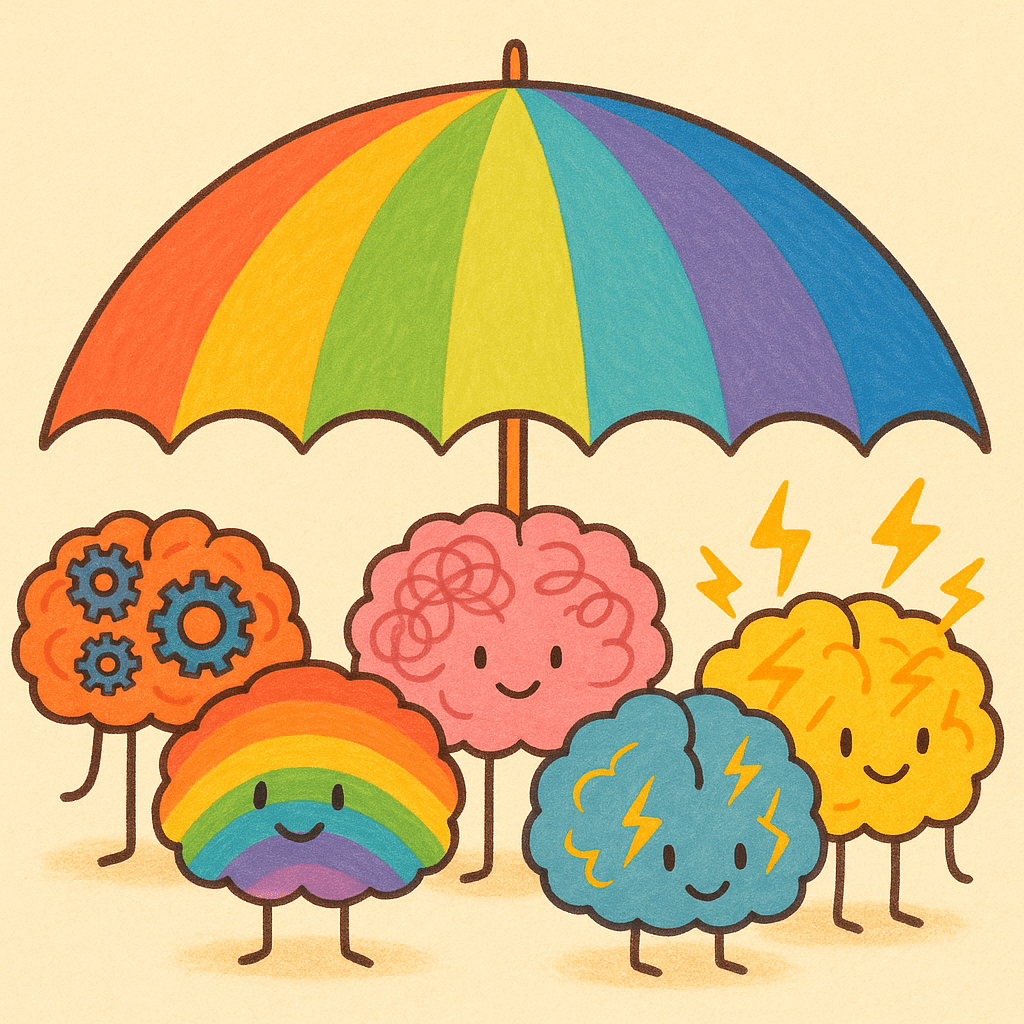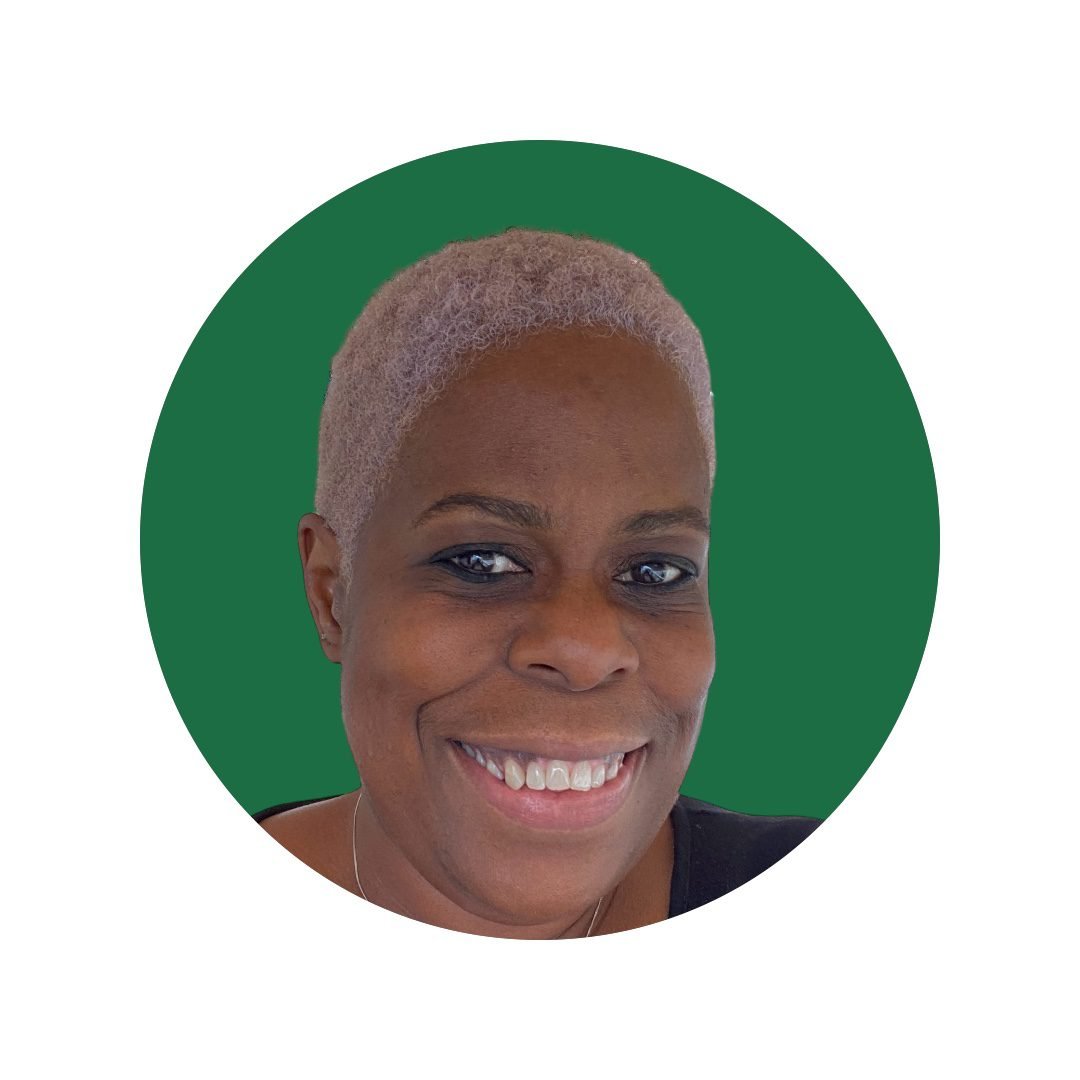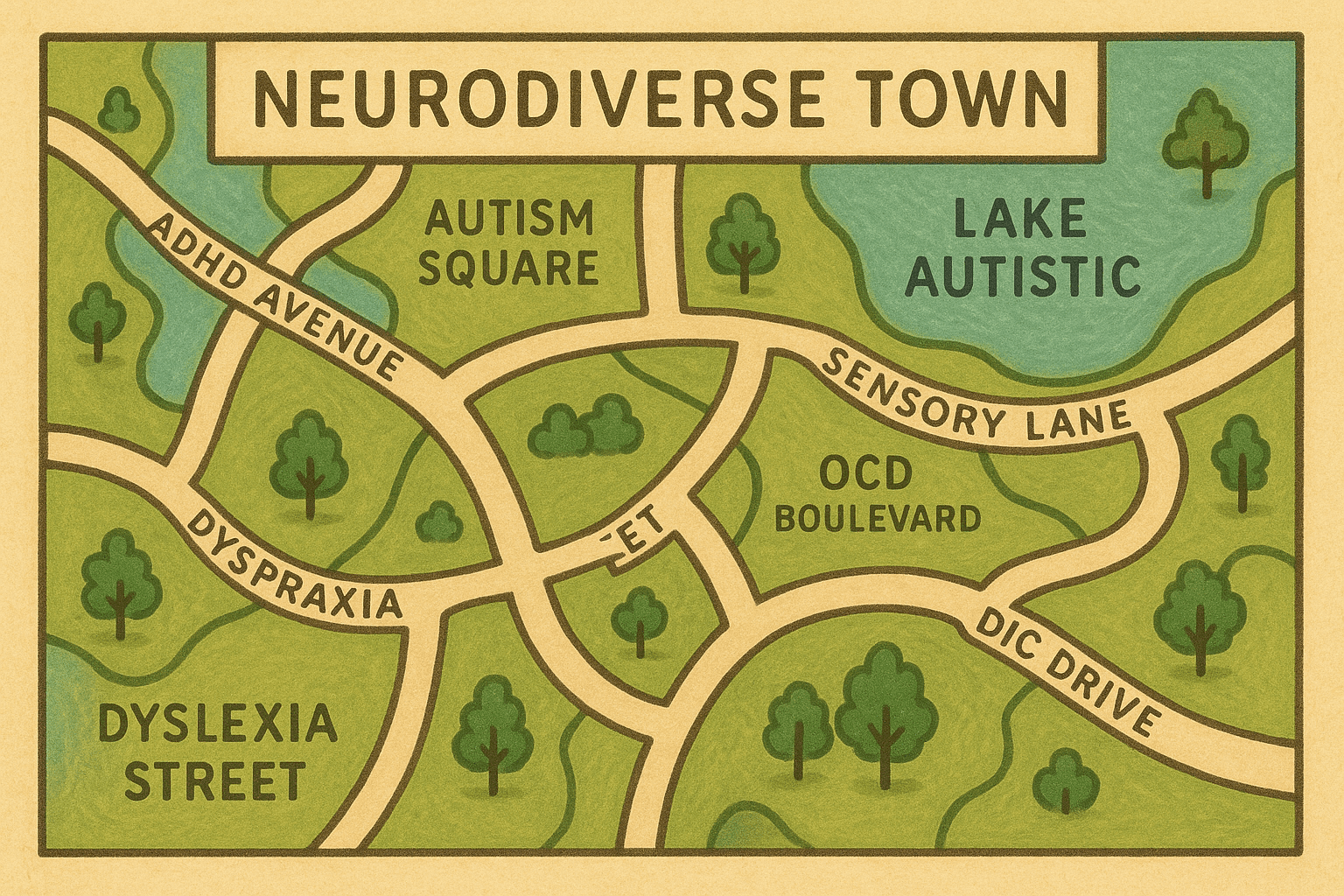Once upon a time, if your brain didn’t work like the person sitting next to you, they called it a disorder and sent you to the quiet table. But the world has moved on. Neurodiversity is the idea that brain differences are natural, valuable, and not always problems to be fixed.
Think of it like biodiversity, but for brains. The world needs bees and bats and belugas, right? Same goes for people who think in tangents, hyperfocus, repeat routines, or feel everything at 200% intensity.
This guide is your friendly, non-overwhelming tour through the kinds of brains that fall under the neurodiversity umbrella. (Or maybe it’s more of a glittery canopy. Umbrella feels too grey.)
What is neurodiversity, exactly?
Neurodiversity refers to the range of different ways human brains are wired. Some folks process language differently. Some get overloaded by bright lights. Some can solve three problems at once, but forget where they put the kettle. All of these are examples of neurodivergence, which means your brain functions differently from what’s considered “neurotypical.”

It’s not a diagnosis. It’s a concept. And an increasingly useful one.
People who fall under the neurodivergent umbrella include those with:
- Developmental conditions (like ADHD or autism)
- Learning differences (like dyslexia)
- Genetic or chromosomal variations (like Down Syndrome)
- Cognitive changes from injury or illness (like TBI or long COVID)
- Certain mental health conditions (like OCD or bipolar)
Let’s break them down without turning this into a textbook.
Neurodevelopmental conditions (born this way)
These tend to show up early in life and shape how someone thinks, moves, speaks, or socialises.
- Autism Spectrum Disorder (ASD): Different ways of thinking, feeling, and relating. Includes sensory sensitivity, routines, and deep interests. Not a flaw. Not a trend. Just a different operating system.
- ADHD: Often mistaken for laziness, actually a brain that runs on urgency, interest, or dopamine. Includes time blindness, impulse control, and bouncing between 40 ideas before lunch.
- Dyslexia: Struggles with reading, but often paired with strong creative and spatial skills. Your brain might mix up letters, but it can also see patterns others miss.
- Dyscalculia: Maths is hard. And not in the “I didn’t revise” way—more like “numbers are in another language.”
- Dysgraphia: Writing is physically painful or visually messy. The words are there, but getting them out is another story.
- Dyspraxia: Coordination challenges that can make simple tasks like tying shoelaces feel like a high-stakes mission.
- Tourette Syndrome: Involuntary tics (movements or sounds). Often misunderstood. The swearing thing? Not everyone does that.
- Auditory Processing Disorder (APD): Hearing is fine, but decoding sounds, especially in noisy rooms? Absolute chaos.
Learning and processing differences
Sometimes it’s not about how you move or feel, but how your brain processes specific types of information.
- Nonverbal Learning Disorder (NVLD): Verbal skills are strong, but social cues and spatial awareness can feel like alien concepts.
- Sensory Processing Disorder: Certain textures, sounds, or lights feel unbearable. Or, you might seek out intense sensations just to feel balanced.
- Synesthesia: You see sounds, taste colours, or assign personalities to numbers. It’s not a bug. It’s a feature.
Genetic and chromosomal conditions
These conditions are part of someone’s DNA, shaping their development and abilities.
- Down Syndrome: Caused by an extra chromosome 21. Affects physical growth, intellectual development, and often comes with a killer sense of humour.
- Fragile X Syndrome: Leads to learning challenges, social anxiety, and a big heart. Often overlaps with autism traits.
- Prader-Willi Syndrome: Impacts hunger signals, learning, and behaviour. Often includes a strong need for routine.
- Williams Syndrome: A rare genetic condition with cardiovascular issues, learning differences, and intense sociability.
- DiGeorge Syndrome (22q11.2 deletion): Affects multiple body systems, often with learning and speech challenges.
Acquired neurodivergence (wasn’t born this way, but here we are)
Neurodivergence can also result from life events, illness, or injury.
- Traumatic Brain Injury (TBI): Affects memory, attention, and personality after a knock to the noggin.
- Stroke-related cognitive changes: Recovery often involves adjusting to new ways of processing or communicating.
- Long COVID: Brain fog, memory glitches, and exhaustion that doesn’t go away with rest.
- Multiple Sclerosis (MS) and Parkinson’s Disease: Neurological conditions that affect both movement and cognitive functions over time.
- Epilepsy: Recurrent seizures that can impact cognition, mood, and daily function.
Mental health conditions (controversially included)
Not everyone agrees these belong under the neurodiversity banner. But many people with these conditions experience the world differently—and permanently.
- Obsessive-Compulsive Disorder (OCD): Not about liking things tidy. It’s intrusive thoughts and the compulsions that try to keep them quiet.
- Bipolar Disorder: Intense mood shifts that aren’t just about being “moody.” Think rocket-fuel highs and crushing lows.
- Borderline Personality Disorder (BPD): Emotion regulation on hard mode. High sensitivity, intense relationships, and chronic fear of abandonment.
- PTSD: Your brain’s alarm system got stuck on high alert. Often from trauma. Sometimes from complex trauma over time.
Why all this matters
Neurodiversity isn’t just a buzzword. It’s a call to design a world that works for more than just one kind of mind. Workplaces, schools, healthcare, even social norms—none of it should rely on everyone processing information or emotions the same way.

Understanding neurodiversity helps:
- Challenge stigma
- Create accessible systems
- Value different strengths
- Build kinder communities
And most importantly? It helps people stop feeling broken and start feeling understood.
Closing thoughts
If your brain has ever made you feel out of step, too much, or not enough – you’re not alone. Neurodiversity says: you’re valid, you’re wired differently, and you’re not defective. Just divergent.
Let’s start celebrating that.
What surprised you most about this list? Do you see yourself (or someone you love) reflected here?
*This image is AI-generated with prompts made by me and serves no educational purpose, it is only used to highlight certain aspects of this article.




